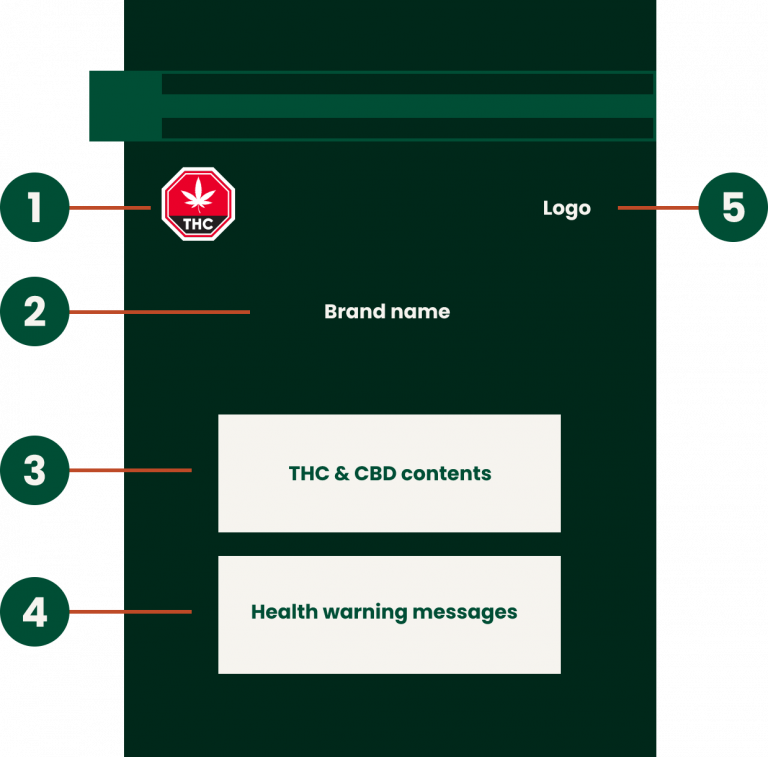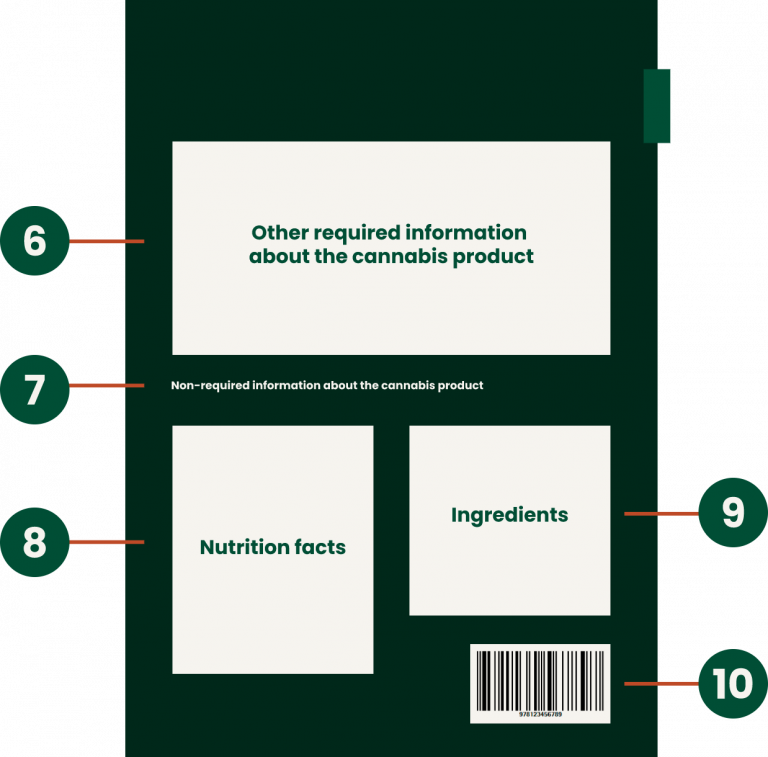
You’ve purchased legal cannabis and the label has a whole lot of information on it, which can look confusing. So, let us help you figure out what you’re looking at.
Not every product will have the same information on the label, most labels will be similar but you will see a slight difference between an edible label and a vape label.
Below is a list of all information that you could see on a legal cannabis product. It is important to note the THC and CBD values.

- The standard legal cannabis THC symbol
This helps you to know you’ve purchased a legal product.
- The brand name of the cannabis product
- THC and CBD content
This section tells you how much THC and CBD are present in your products. There is a breakdown in mg per unit and the total for the whole package.
- Health warning message
This message here just reminds you of the effects of using cannabis.
- Cannabis licensed producer logo
This is the logo of the company that produced your cannabis product.

- Other required information about the cannabis product
This information is required by Health Canada and ensures products can be recalled if necessary.
- Non-required information about the cannabis product
This space may be left blank or include info about the product such as an additional health warning.
- Nutrition facts table (if applicable)
This gives you a breakdown of everything that is in your cannabis product.
- List of ingredients
So you can see all the ingredients in the cannabis product you’ve purchased.
- Bar code
Understanding THC & CBD
When it comes to potency of THC and CBD, there are some important things we need to understand to avoid any negative side effects.
Cannabis in its dried flower form, such as a pre-roll, has to be exposed to heat to activate the cannabinoids. This process is called decarboxylation. If you don’t light or activate the pre-roll, the amount of THC available to the user is a lot lower.
Oils and edibles do not require activation since they already underwent that process during production.
Knowing that THC has a lower potency before decarboxylation and higher potency after means we can look at the values on a label and they will make a lot more sense.
Converting potency from mg/g to %
Converting mg/g to % is easy—all you have to do is move the decimal point one spot to the left and you’ll figure out the percentage of THC or CBD.
For example, if the flower is listed as 192 mg/g of Total THC, then it contains 19.2% THC.
Remember, you have to use the Total THC as listed on the package for this conversion.
Here are some common potencies in both mg/g and their % equivalent:
| mg/g | % |
|---|---|
| 50 mg/g | 5% |
| 100mg/g | 10% |
| 150 mg/g | 15% |
| 200 mg/g | 20% |
| 300 mg/g | 30% |
| 500 mg/g | 50% |
| 1000 mg/g | 100% |